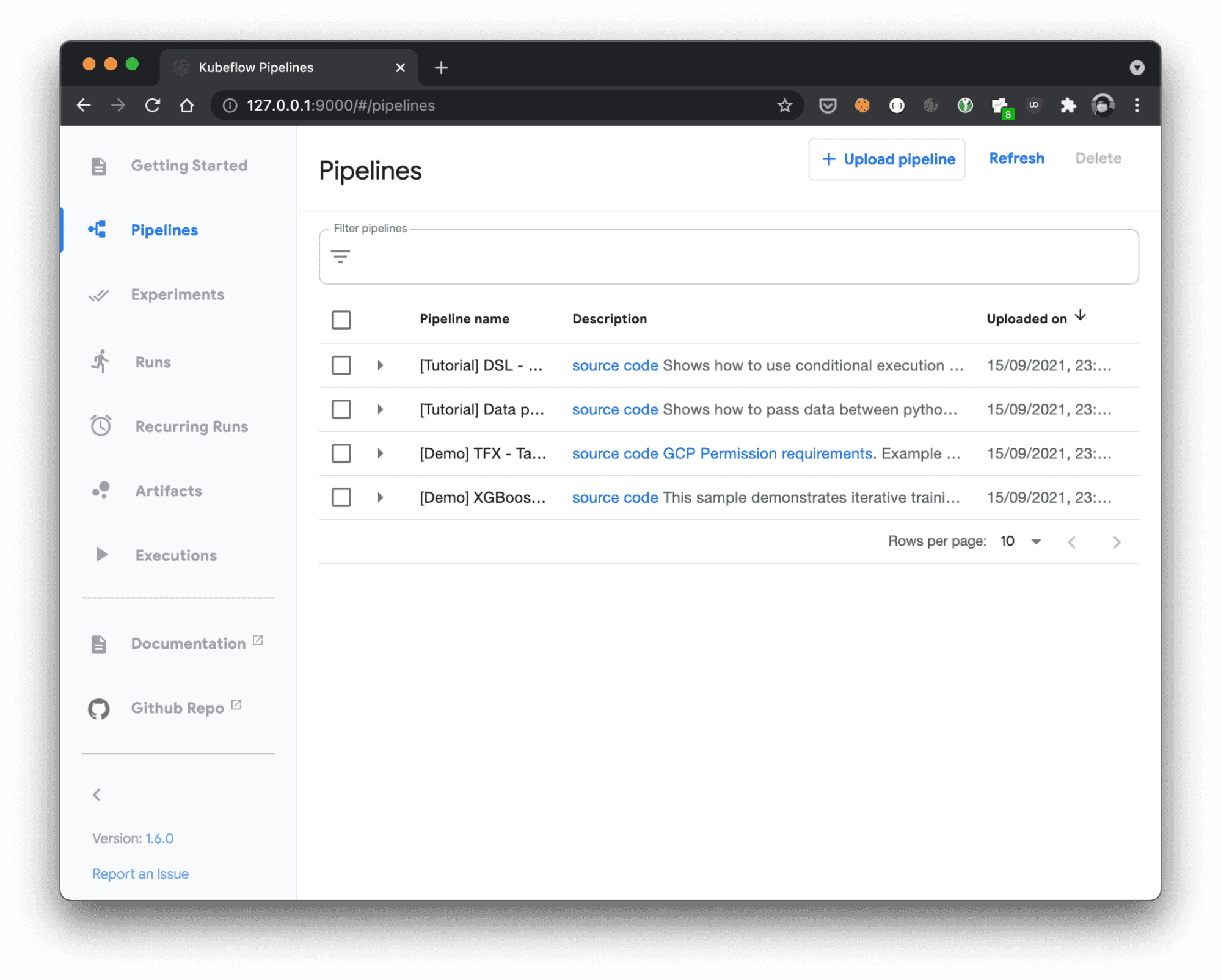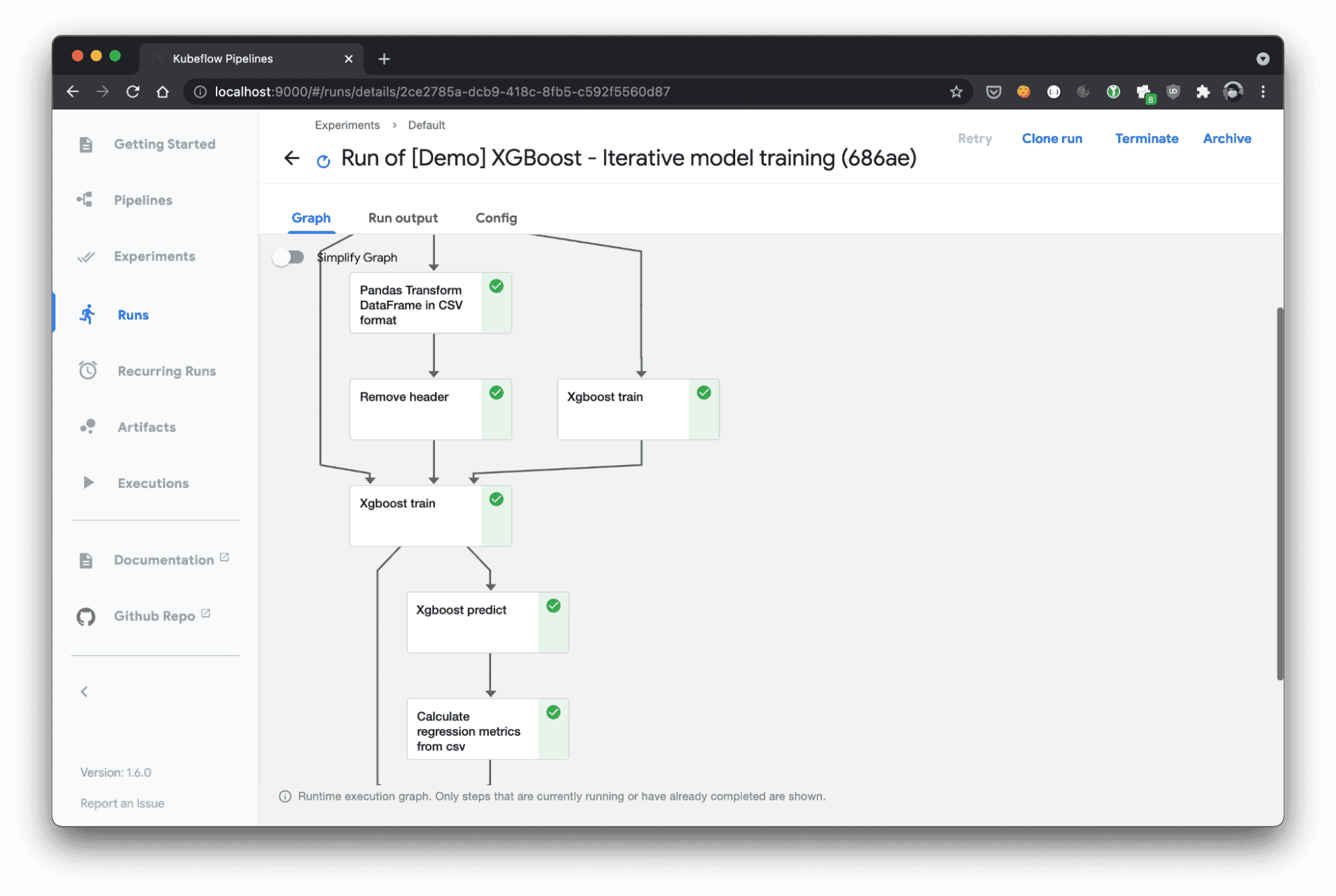A Review of the Presentations at the Big Data Technology Warsaw Summit 2022!
The 8th edition of the Big Data Tech Summit is already over, and we would like to thank all of the attendees for joining us this year. It was a real…
Read moreThe Kubeflow Pipelines project has been growing in popularity in recent years. It's getting more prominent due to its capabilities - you can orchestrate almost any machine learning workflow and run it on a Kubernetes cluster. Although KFP is powerful, its installation process might be painful, especially in cloud providers other than Google (who are the main contributor to the Kubeflow Project). Due to its complexity and high entry level, Data Scientists seem to be discouraged to even give it a go. At GetInData, we have developed a platform-agnostic Helm Chart for Kubeflow Pipelines, that will allow you to get started within minutes, no matter if you're using GCP, AWS or whether you want to run with KFP locally.
Before you start, make sure you have the following software installed:
Once you have all of the required software, the installation is just a breeze!
kind create cluster --name kfp --image kindest/node:v1.21.14It usually takes 1-2 minutes to spin up a local cluster.
helm repo add getindata https://getindata.github.io/helm-charts/
then
helm install my-kubeflow-pipelines getindata/kubeflow-pipelines --version 1.6.2 --set
platform.managedStorage.enabled=false --set platform.cloud=gcp --set
platform.gcp.proxyEnabled=false
Now you need to wait a few minutes (usually up to 5, depending on your machine) for the local KIND cluster to spin up all apps. Don't worry if you see ml-pipeline or metadata-grpc-deployment pods having a CrashLoopBackOff state for some time - they will become ready once their dependent services launch.
The KFP instance will be ready once all of the pods have this status Running:
kubectl get pods
| NAME | READY | STATUS | RESTARTS | AGE |
|---|---|---|---|---|
| cache-deployer-deployment-db7bbcff5-pzvwx | 1/1 | Running | 0 | 7m42s |
| cache-server-748468bbc9-9nqqv | 1/1 | Running | 0 | 7m41s |
| metadata-envoy-7cd8b6db48-ksbkt | 1/1 | Running | 0 | 7m42s |
| metadata-grpc-deployment-7c9f96c75-zqt2q | 1/1 | Running | 2 | 7m41s |
| metadata-writer-78f67c4cf9-rkfkk | 1/1 | Running | 0 | 7m42s |
| minio-6d84d56659-gcrx9 | 1/1 | Running | 0 | 7m41s |
| ml-pipeline-8588cf6787-sp68f | 1/1 | Running | 1 | 7m42s |
| ml-pipeline-persistenceagent-b6f5ff9f5-qzmsl | 1/1 | Running | 0 | 7m42s |
| ml-pipeline-scheduledworkflow-6854cdbb8d-ml5mf | 1/1 | Running | 0 | 7m42s |
| ml-pipeline-ui-cd89c5577-qhgbc | 1/1 | Running | 0 | 7m42s |
| ml-pipeline-viewer-crd-6577dcfc8-k24pc | 1/1 | Running | 0 | 7m42s |
| ml-pipeline-visualizationserver-f9895dfcd-vv4k8 | 1/1 | Running | 0 | 7m42s |
| mysql-6989b8c6f6-g6mb4 | 1/1 | Running | 0 | 7m42s |
| workflow-controller-6d457d9fcf-gnbrh | 1/1 | Running | 0 | 7m42s |
In order to connect to KFP UI, create a port-forward to the ml-pipeline-ui service:
kubectl port-forward svc/ml-pipeline-ui 9000:80
and open this browser: http://localhost:9000/#/pipelines

Our platform-agnostic KFP Helm Chart was based on the original chart maintained by the GCP team. At the moment of the fork, GCP chart was running version 1.0.4, we upgraded all of the components so that KFP was running the up-to-date version 1.6.0 (at the time of writing this post). GCP-specific components, such as CloudSQLProxy, ProxyAgent were refactored to be deployed conditionally, based on values provided in the chart.
We introduced a setting to enable or disable managed storage. Once enabled, it can use:
Now that you have a fully working local Kubeflow Pipelines instance, you can learn KFP DSL and start building your own machine learning workflows without the need for provision of a full Kubernetes cluster.

I encourage you to also explore GetInData's Kedro Kubeflow plug-in, which enables you to run the Kedro pipeline on Kubeflow Pipelines. It supports translation from the Kedro pipeline DSL to KFP (using Pipelines SDK) and deployment to running a Kubeflow cluster with convenient commands. Once you create your Kedro pipeline, configure the plug-in to use a local KFP instance by setting the host parameter in conf/base/kubeflow.yaml:
host: http://localhost:9000
# (...) rest of the kubeflow.yaml config
To stay up-to-date with the KFP Helm Chart, follow the Artifact Hub page! If you would like to know more about Kedro Kubeflow plug-in, check the documentation here.
Interested in ML and MLOps solutions? How to improve ML processes and scale project deliverability? Watch our MLOps demo and sign up for a free consultation.
The 8th edition of the Big Data Tech Summit is already over, and we would like to thank all of the attendees for joining us this year. It was a real…
Read moreBuilding a modern analytics environment is a strategic, long-term, iterative process of continuous improvement rather than a one-off project. The…
Read moreLogs can provide a lot of useful information about the environment and status of the application and should be part of our monitoring stack. We'll…
Read moreHello again in 2020. It’s a new year and the new, 6th edition of Big Data Tech Warsaw is coming soon! Save the date: 27th of February. We have put…
Read moreIn the "Power of Big Data" series, I will talk about the possibilities that Big Data solutions give to individual business sectors. It should be noted…
Read moreApache Sedona is a distributed system which gives you the possibility to load, process, transform and analyze huge amounts of geospatial data across…
Read moreTogether, we will select the best Big Data solutions for your organization and build a project that will have a real impact on your organization.
What did you find most impressive about GetInData?